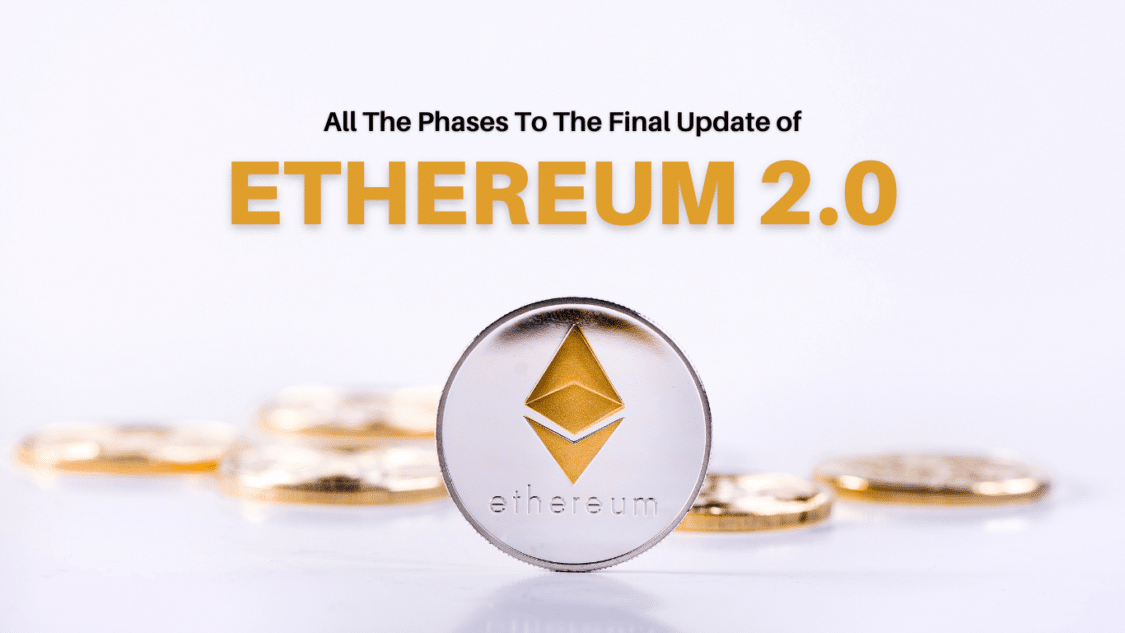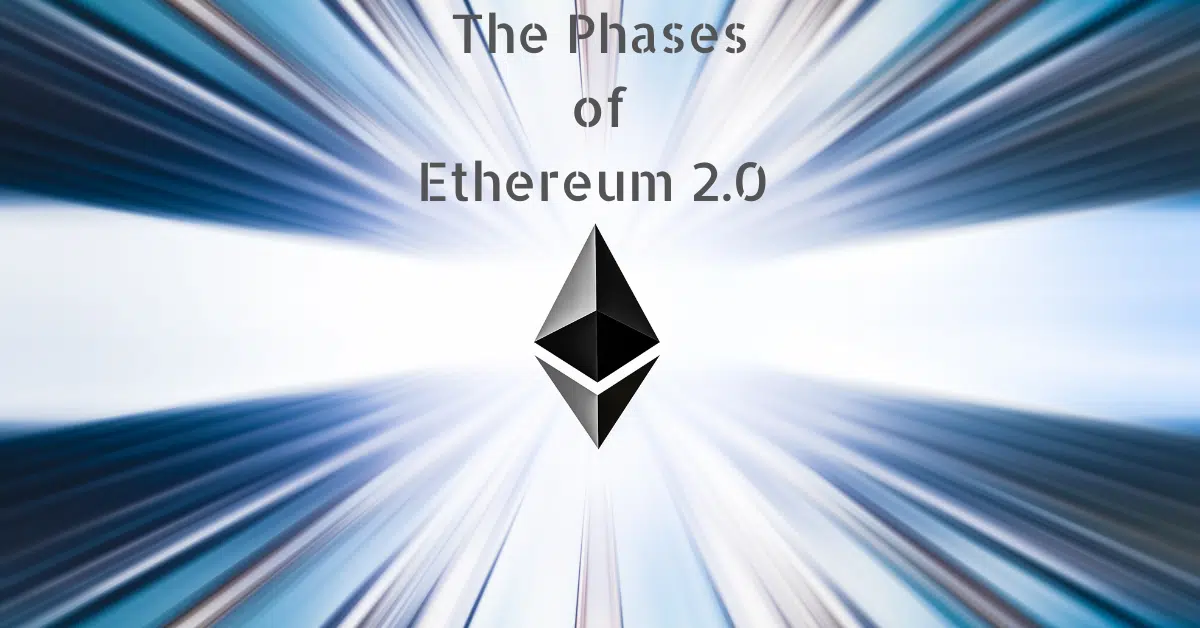Knowing ETH2 phases of upgrade will help you understand where Ethereum started and where it is now. Ethereum is the most widely used blockchain worldwide. The Ethereum blockchain was also the first to introduce smart contracts, which led to the development of dapps on the platform and the creation of DAOs and DeFi. The speedy growth and popularity of the network led to scaling issues. Along with the scaliness of the network came congestion and high gas fees.

A Scaling Solution
The Ethereum community of developers worked day and night to devise a scaling solution for Ethereum, which is known as Ethereum 2.0(ETH2). The final and most defining feature of Ethereum’s 2.0 upgrade is the phase of the proof of stake consensus.
One of the most significant upgrades in Ethereum’s history was the switch from the original, energy-intensive, mining-based Proof-of-Work (PoW) model to a more adaptable and scalable proof of stake (PoS) methodology.
The result of Ethereum 2.0 is a secure and user-friendly platform and a blockchain network suitable for the growth of Ethereum into a global supercomputer. This comprehensive Ethereum 2.0 upgrade plan is expected to be developed and implemented over several years through quite a few phases.
Ethereum 1.0 – Homestead to Metropolis
Frontier was the first and official release of the Ethereum network. Its launch was in July 2015 as a proof of work mechanism. This rough draft of the network got it off the ground with its minimum services. A command line for mining ether and the possibility of uploading and executing contracts.
Approximately a year later, in March 2016, the Frontier version was stable enough to move on to the next stage. The next phase is Homestead. Homestead offered a command line interface, greater stability, and a few extra features, much like beta testing.
In October 2017 came Metropolis. This was the final stage of Ethereum before initiating the Serenity upgrade in 2020. The 2017 ICO boom was possible because Metropolis provided a user interface with more features opening the gates for dApp development and tokenization.
These first three phases were Ethereum developmental roadmap between 2015 and 2020. It laid the groundwork for December 2020, when the Serenity phase came into action.
Serenity – Beacon Chain and PoS Framework
Although the Serenity phase went into effect on December 1, 2020, the effects will take time. The main goal of the Serenity phase was to lay the groundwork for the famous Beacon Chain, which is the primary governing system of Ethereum’s forthcoming PoS blockchain.
Phase 0 consisted of three significant technological changes; the beacon chain, the PoS consensus mechanism, and validator nodes. As the development of Serenity becomes clear over time, the Beacon Chain will be the primary settlement layer for the network. In the next Phase 1 of Serenity’s upgrades, this feature will make its Ethereum mainchain debut.

(ETH2)Ethereum 2.0 Phase 1 – Sharding Framework
The Serenity phase 1 updates objective is introducing shard chains and roll-ups. Sharding is a standard scaling solution in breaking down the network into small pieces to increase the capacity of transactions and, more importantly, the speed. Roll-ups occur off-chain and work to bunch transactions together for execution before being implemented on the main chain.
When sharding is complete, the Beacon Chain will eventually act as the Ethereum blockchain’s base layer. This will enable settlement and finality for transactions occurring on shard chains.
Phase 0 and Phase 1 will not work together until Phase 1.5 and Phase 2 are in the picture. Sometime in 2021 is when Phase 1 will be implemented.
Phase 1.5 and 2 – Bridging the Gap
The primary goal of Phase 1.5 is bridging the gap between Ethereum 1.0 and Ethereum 2.0. The word docking is often used to refer to the merge of the two protocols. This means Ethereum 1.0 will be docked with the beacon chain and its shard chains.
One of the 64 shard chains, under Ethereum’s PoS algorithm, will be the Ethereum 1.0 blockchain. The Beacon Chain will be given access to the history and state of Ethereum through the Ethereum 1.0 mainnet shard. This will result in a seamless switch between the two networks. After that, the Beacon Chain will manage validators’ roles inside multiple shard chains.
Between 2021 and 2022, after Phase 1 has been implemented and verified to be fully functional, Phase 1.5 will be released. Phase 2 is to start when cross-shard interoperability and native dApp development on Ethereum 2.0 are complete. Following the successful docking and thorough testing of the Ethereum 1.0 blockchain in the Ethereum 2.0 ecosystem.
Phase 2 will allow the system to handle transactions and smart contracts. In addition, this phase will bring with it the programming languages for smart contracts. Phase 2 will be released after Phase 1.5’s successful testing because it is a distinct technological development phase that complements it.
Phase 3 – Ethereum 2.0(ETH2) – Final Touches
The third step of the Ethereum 2.0 upgrade is the last and least defined of the phases. This phase solves issues that need completion before Ethereum 2.0 is complete. Issues include extra shard chains, privacy and security implementations, etc.

Each phase of the Serenity update will to take about six to eight months until complete. As the Beacon chain was introduced in December 2020, the completion date for Serenity is in 2023. It’s critical to understand that the Ethereum foundation and network are undergoing ground-breaking and innovative development at this time. It’s a massive challenge with many unknowns, but it builds on the incredible work already done by the Ethereum network and the blockchain industry as a whole. Lastly, it will reveal the potential for decentralized technology when completed.
For more news updates, visit our homepage now and see our latest news article. Want to learn more about trading? Visit our education page now and learn for FREE!

